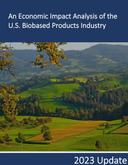Lux Research: DNA freeware may out-innovate patented genes




August 30, 2013
BY Lux Research
With synthetic biology (synbio) rapidly gaining momentum, and a landmark U.S. Supreme Court judgment striking down an age-old biological patenting system, biotechnology companies need to incorporate open-source into their innovation plans in order to succeed in the emerging landscape, according to Lux Research.
Just as software patent battles are hobbling innovators like Google, Apple and Samsung in a multibillion-dollar morass, many classes of biotech patents are increasingly seen as a legally dubious, high-cost hindrance to innovation – as the Supreme Court acknowledged in its recent AMP vs. Myriad decision.
But that’s not necessarily bad news for business or consumers. Alternatives to patents, like open-source computer code, standard protocols like GSM and HTML, and modular software have transformed information technology and accelerated product innovation in the space. Similarly, open-source genetic codes, such as modular DNA sequences, could hasten to market better drugs, biobased materials and useful organisms.
“Despite its evident rise, the open-source biology movement should not be seen as an alternative to conventional R&D or an enemy of IP,” said Mark Bünger, Lux Research Director and the lead author of the report titled, “BioPunks and BioPatents: The Open-source Battle Comes to Synbio IP.”
Advertisement
Advertisement
“In fact, corporations should pursue upstream innovations with conventional suppliers, licensors and M&A targets, while using a mix of corporate and academic partners, and the open-source community for earlier-stage research,” he added.
To evaluate patenting activity, Lux Research analysts studied more than 10,000 patents in 14 key areas of synthetic biology and compared most conventional forms of IP with other, open source indicators of experimentation and innovation, such as scientific papers, iGEM teams, and BioBricks projects. Among their findings:
* Synbio patenting is focused on engineering metabolic products. The biggest market for synthetic biology today is in engineering organisms to produce molecules normally refined from petroleum, like fuels and chemicals. Solazyme, for example, has one of the highest patent counts with nearly 200 patents in 60 families.
Advertisement
Advertisement
* Novel structural materials are the next frontier. AmSilk, Refactored Materials, Siluria and CSIRO are all pursuing ways to replicate natural protein-based materials like spider silk or to use nanostructured protein templates. Conventional and open-source science predominate the space but patenting is also beginning.
* Conventional partnering is still key. Even in the new emerging landscape, traditional partnerships involving licensing and M&A remain important to success. For example, in 2012, Evolva paid €1.3 billion for Fluxome’s resveratrol microbe technology.
The report, titled “BioPunks and BioPatents: The Open-source Battle Comes to Synbio IP,” is part of the Lux Research Bio-based Materials and Chemicals Intelligence service.
Related Stories
The U.S. Department of Energy Bioenergy Technologies Office (BETO) announced up to $23 million in funding to support research and development (R&D) of domestic chemicals and fuels from biomass and waste resources.
The U.S. DOE has announced its intent to issue funding to support high-impact research and development (R&D) projects in two priority areas: sustainable propane and renewable chemicals and algal system cultivation and preprocessing.
Sens. Sherrod Brown, D-Ohio, and Pete Ricketts, R-Neb., in August introduced the Renewable Chemicals Act, a bill that aims to create a tax credit to support the production of biobased chemicals.
The Chemical Catalysis for Bioenergy Consortium, a consortium of the U.S. DOE’s Bioenergy Technologies Office, has launched an effort that aims to gather community input on the development of new biomass processing facilities.
USDA on March 8 celebrated the second annual National Biobased Products Day, a celebration to raise public awareness of biobased products, their benefits and their contributions to the U.S. economy and rural communities.
Upcoming Events










